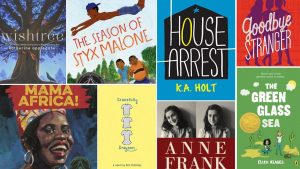Rediscovering Dodie Smith | Anna Leszkiewicz

One of many worst moments of Dodie Smith’s life was when her debut novel grew to become a bestseller. It was 1948, she was fifty-two, and I Seize the Fort, her coming-of-age story instructed by means of the diary of a teenage lady, had simply made the New York Occasions high ten fiction record. The American Literary Guild, which selected it because the November e-book of the month, ordered greater than half one million copies and despatched her a $42,000 verify.
“Anybody studying by means of my press-cuttings e-book would imagine the novel had had an excellent essential success and an excellent business one,” Smith wrote in her diary that December. “However the truth stays that [I] have been bitterly disenchanted; and the weeks which adopted publication have been amongst probably the most sad in my life.” The e-book’s reputation confirmed her biggest concern: that, for all her effort, it will be obtained not as a literary work however as middlebrow. The critics who mattered had handed it “over as light-weight and unimportant.” She stopped consuming and retreated to mattress.
Smith could also be greatest identified for her kids’s e-book The Hundred and One Dalmatians (1956), however I Seize the Fort, now thought-about a Younger Grownup traditional, a really English comedy, a touching romance, and, because it has been repeatedly referred to as, a consolation learn, stays her most charismatic work. But it has by no means obtained the essential remedy Smith hoped for. The cultural battle that outlined her its reception—between “light-weight and unimportant” middlebrow writing and the intellectual literary fiction that emerged within the Twenties and Thirties—is among the central preoccupations of the novel itself. Beneath its floor appeal is a metaliterary inquiry into type, fashion, and advantage, in addition to an affecting portrait of the artist as a younger lady.
Dorothy Gladys Smith, initially nicknamed “Dodo,” grew up in Manchester together with her mom, maternal grandparents, three uncles, two aunts, and two maids. She recollects her chaotic residence with affection within the first of her 5 volumes of memoir, Look Again with Love (1974). When she was eight her grandmother gave her a shilling train e-book (“very thick, with a shiny black cowl that smelt inspiring—I licked it often”) and he or she used it to start her first piece of fiction, during which “the heroine had dancing eyes and the one contact of originality was within the spelling.”
In her teenagers she wrote quick tales and performs and acted in native productions. After leaving college, she educated as an actor at London’s Royal Academy of Dramatic Artwork and, in her early twenties, made simply sufficient cash from small roles to outlive. (As Valerie Grove writes in her colourful biography Pricey Dodie, Smith lived in a Marylebone performers’ hostel on a food regimen of Heinz tinned spaghetti, baked beans, and a weekly egg.) At twenty-seven she gave up on performing and took a job within the division retailer Heal’s, the place she had an affair with the proprietor, the British designer Ambrose Heal. He used his London society contacts to drum up curiosity in her first staged play, Autumn Crocus, written below the pseudonym C. L. Anthony, which premiered in 1931.
It was effectively obtained. Nineteen journalists turned as much as interview Smith; the headline on the Night Information billboards learn “SHOPGIRL WRITES PLAY.” The manufacturing introduced her sudden wealth. She was invited to affix the all-male Dramatists’ Membership and have become a part of London’s theater scene, befriending Noël Coward, John Gielgud, and the impresario Hugh “Binkie” Beaumont. She wrote and staged an extra 5 performs, together with her largest success, Name It a Day, and her best-known dramatic work, Pricey Octopus. These lighthearted depictions of human relationships, filled with wry observations of middle-class life, gave her a fame as a dramatist of barely twee comedies geared toward girls; the critic J. C. Trewin referred to as Pricey Octopus her “cozy nook on the domestic-sentimental.”
In early 1939 Smith fled together with her husband Alec Beesley, a conscientious objector, from London to California. She spent the battle years sad within the “pitiless” sunshine and eager for her Essex cottage; to console herself she wrote a novel a few crumbling citadel she had as soon as visited.
Set in 1935, I Seize the Fort consists of the diary entries of Cassandra Mortmain, the center baby of a celebrated modernist novelist with continual author’s block. In her journal Cassandra information her hopeless, eccentric household’s efforts to outlive with out an earnings of their drafty and unfurnished citadel on an property in Suffolk. Her father James’s fame rests on Jacob’s Wrestling, a formally experimental work “with out forerunners or successors.” However he stopped writing when Cassandra was 5 years outdated, after a three-month stint in jail, the place he was despatched when a neighbor witnessed him brandishing a knife at his spouse as he was about to chop a cake. Cassandra describes the incident within the first few pages of the novel as “ludicrous” fairly than alarming. Three years later her mom dies “from completely pure causes.”
The household now consists of Cassandra, her stunning, self-absorbed twenty-one-year-old sister Rose, her fifteen-year-old brother Thomas (“all homework and urge for food”), their father, and their stepmother of three years, a pretentious however caring artist’s mannequin named Topaz (“There isn’t any legislation to make a girl stick with a reputation like that”). Hungry and chilly, they reside in cheerful denial about their dire circumstances.
Becoming a member of them within the citadel is Stephen, the eighteen-year-old orphaned son of their former maid. He works for the household for no pay and has an all-consuming crush on Cassandra, who thinks he’s “very reasonable and noble-looking however his expression is only a fraction daft.” When two wealthy American brothers, Simon and Neil, who’ve inherited the property, arrive within the village, the sisters think about certainly one of them sweeping in to marry Rose and rescue all of them from destitution.
Smith stored intensive diaries on looseleaf paper, page-numbered, which now reside in her papers on the Howard Gottlieb Analysis Heart at Boston College.1 Her wartime entries—written in a cramped, tense hand—are stuffed with homesickness and guilt. On Christmas Day 1941, she is shocked to notice that one thing “stored my thoughts off England, recently—and even, somewhat, of the battle”: she was immersed in “my semi-novel, I Seize the Fort,” of which she had written round 20,000 phrases.
However quickly she set the manuscript apart, distracted by information of the battle. Solely in 1945 did she take up the novel once more; that August she rushed by means of the final chapters. She was anxious about its literary advantage: “I can’t make out if the entire will probably be fairly authentic and charming or infantile and hot-making” (that’s, embarrassing). She instructed pals the novel, which she labored on “with a care that may not have disgraced Flaubert,” was just like the pulpy romance journal “Peg’s Paper written by the small-girl’s Proust.” She felt Proust and Joyce have been its largest influences—“unusual forefathers,” she admitted, for a romance novel.
Within the Twenties and Thirties, a tradition battle raged on either side of the Atlantic: the “battle of the brows.” The late-Victorian phrases “intellectual” and “lowbrow” emerged from the trendy pseudoscience of phrenology, which posited {that a} bigger brow indicated a bigger mind and a extra clever thoughts—a delusion used to justify all method of white supremacist beliefs. The phrases had grown common in discussions of tradition on the flip of the century, significantly in the USA. Quickly they grew to become pejoratives. In his 1915 essay “Intellectual and Lowbrow,” the American critic Van Wyck Brooks contrasted “literature” with the lowbrow “best-seller,” which amounted to “richly rewarded trash.”
In 1925 the British satirical journal Punch responded to the creation of the BBC—with its dedication to “inform, educate and entertain” the British public—by coining the phrase “middlebrow” for “people who find themselves hoping that some day they’ll get used to the stuff they ought to love.” In a posthumously printed letter to a reviewer, Virginia Woolf proudly declared herself a intellectual: “If any human being, man, lady, canine, cat or half-crushed worm dares name me ‘middlebrow’ I’ll take my pen and stab him, useless.” In Fiction and the Studying Public (1932), Q. D. Leavis deemed e-book golf equipment just like the American E-book of the Month (based in 1926) and the Literary Guild (based in 1927) “devices not for bettering style however for standardising it on the middlebrow stage.”
Virtually as quickly as these cultural distinctions had been drawn, they took on gendered connotations. The vast majority of E-book of the Month membership members have been feminine; in Britain girls rented twice as a lot common fiction from “twopenny libraries” as males. In a 1936 essay George Orwell famous that “the common novel”—that’s “the unusual, good-bad, Galsworthy-and-water stuff”—“appears to exist just for girls.” Of their work of social historical past The Lengthy Week-Finish (1940), Robert Graves and Alan Hodge mirrored that “because the Twenties lapsed into the Thirties…the low-brow public in Nice Britain progressively grew up” and “the mezzo-brow ‘E-book of the Month’…grew to become (by means of the Twopenny Libraries) the shop-girls’ studying.”
Smith’s anxieties concerning the literary standing of her e-book weren’t incidental to its narrative. It is a e-book about literature, asking what makes a piece “literary” fairly than middlebrow or, God forbid, pretentious. Because the critic Victoria Stewart has famous, two forms of writing are set towards one another in I Seize the Fort: the dutiful realism of Cassandra’s diary, with its conventionally “female” issues (household relationships, home issues, romance, the personal feelings of a seventeen-year-old lady), and her father’s excessive modernism, which mixes genres (“fiction, philosophy and poetry”) and undertakes experiments like a “ladder chapter… printed in order that it really seems to be like a ladder.”2 James Mortmain is modeled on Joyce: he’s certainly one of “the forerunners of post-war literature…a hyperlink within the chain of writers who’ve been obsessed by type.” It has been “a great twelve years” since he was final printed, which means that Jacob’s Wrestling would have appeared across the identical time as Ulysses. Now he spends hours absorbed in middlebrow tradition—kids’s tales, detective novels, comics, and crosswords—and mutters to himself about literary type: “Design, deduction, reconstruction—image—sample and downside—seek for ever unfolding—enigma everlasting.”
The title of Smith’s novel calls to thoughts not solely Cassandra’s efforts at literary illustration but in addition a navy battle or chess sport. Father and daughter are locked in a literary energy wrestle that performs out each on the web page and within the citadel: at one level he bodily throws her out of his examine; by the tip of the novel, she has lured him out. After James reads certainly one of Cassandra’s tales, she remembers, “he stated I mixed stateliness with a determined effort to be humorous. He instructed me to chill out and let the phrases movement out of me.” At first she follows his recommendation:
I’m penning this journal partly to observe my newly acquired speed-writing and partly to show myself learn how to write a novel—I intend to seize all our characters and put in conversations. It must be good for my fashion to sprint alongside with out a lot thought.
The earliest entries are unselfconscious, mixing breezy confidence, humor, and rose-tinted depictions of a creative household in genteel poverty. These scenes are among the e-book’s most memorable: Cassandra dyeing her palms inexperienced within the tub, the sisters making needs on the stone gargoyle above the kitchen fire or whispering in mattress about Austen and Charlotte Brontë and their wealthy American neighbors.
However quickly Cassandra begins to grapple with issues of perspective and remembrance. Trying by means of a window at her household, “they appear fairly totally different, a bit the best way rooms seen in looking-glasses do. I can’t get the sensation into phrases—it slipped away after I tried to seize it.” A cocktail party on the People’ grand Scoatney Corridor “glows in my reminiscence like a darkish image with a luminous centre—candlelight and shining flooring and the night time urgent towards the black home windows.” Towards the e-book’s finish Cassandra has a Proustian recollection on listening to the “tinkling chime” of a clock that belonged to her late mom:
After which my thoughts’s eye noticed her face—not the {photograph} of it which is what I at all times see after I consider her, however her face because it was. I noticed her gentle brown hair and freckled pores and skin—I had forgotten till then that she had freckles. And that very same on the spot, I heard her voice in my head—in any case these years of not with the ability to hear it.
Progressively the tone shifts. Simon turns into engaged to her sister, however Cassandra falls in love with him regardless of herself. As she ruminates on her blossoming emotions, grows indifferent from her childhood pleasures, and imagines a life past the citadel, she has to be taught to write down in a brand new means. By the tip of the novel, she notes: “I don’t intend to go on with this journal; I’ve grown out of wanting to write down about myself.”
Within the novel’s farcical crescendo, having taken actually the concept a psychoanalyst would put her father “again in jail” to remedy his writers’ block, Cassandra locks him within the citadel tower. He emerges with a primary web page that accommodates a single sentence (“THE CAT SAT ON THE MAT”) in “giant block capitals—badly fashioned ones, akin to a baby makes when studying to write down.” That is to be the beginning of Mortmain’s groundbreaking novel—a Portrait of the Artist–fashion depiction of the start of the author’s consciousness, from childhood, that can also be a collection of puzzles for the reader to unravel—and a literary motion, “Enigmatism.”
Skepticism towards the avant-garde was one thing of a trademark of “middlebrow” fiction of the interval, which specialised, within the scholar Nicola Humble’s phrases, in “gleefully mocking intellectual mental pretensions.” However, as Humble notes, by the Nineteen Forties excessive modernism was “being taken extra severely by the middlebrow,” permitting Smith to “borrow” its units and characterize it with “the sting out.”3 Stewart argues that “Smith doesn’t merely parody or devalue modernism.” Certainly, the novel involves recommend that Cassandra’s writing has extra in frequent together with her father’s than it first seems—even that they may have equal literary standing. Her e-book, too, circles most of the central preoccupations of modernist authors: learn how to pin down ideas, sensations, and momentary experiences on the web page; learn how to register the pressures of the previous and the longer term on the current. On Midsummer Day “the citadel appeared to be mine in a means it by no means had been earlier than,” she writes:
The day appeared specifically to belong to me; I even had a sense that I owned myself greater than I often do. I grew to become very acutely aware of all my actions—if I raised my arm I checked out it wonderingly, pondering, “That’s mine!” And I took pleasure in shifting, each within the bodily effort and within the contact of the air—it was most queer how the air did appear to the touch me, even when it was completely nonetheless. All day lengthy I had a way of nice ease and spaciousness. And my happiness had a wierd, remembered high quality as if I had lived it earlier than. Oh, how can I recapture it—that completely proper, homecoming sense of recognition? It appears to me now that the entire day was like an avenue resulting in a house I had liked as soon as however forgotten, the reminiscence of which was coming again so dimly, so progressively, as I wandered alongside, that solely when my residence ultimately lay earlier than me did I cry: “Now I do know why I’ve been completely satisfied!”… On and on I wander, beneath the vaulted roof of department and leaf…and on a regular basis, the avenue is yesterday, that lengthy method to magnificence.
Simply as she approaches the ineffable, she offers up, ending with a shrug. “Pictures within the thoughts, how unusual they’re…”
It was a problem for Smith to channel her literary ambitions by means of an adolescent’s voice. In October 1945 she started revisions that may take virtually three years. Revisiting her first chapters, she was “staggered by their badness” and will barely get by means of a web page a day. In her fourth quantity of memoir, Look Again With Gratitude (1985), she recalled that “sentence after sentence needed to be rewritten—typically a number of occasions—earlier than it happy my thoughts, my ear and my conception of the seventeen-year-old journal-writer.” The “relentless revising” affected her well being. Her handwriting disintegrated.
By July 1947 she was in despair. Engaged on a couple of pages “leaves me good for nothing, not even able to taking pleasure in music or studying.” She in contrast the “agonies” of revision to crucifixion, or childbirth, imagining the e-book will make “a really wretched, wizened toddler.” In August her husband learn the draft aloud, and so they made an inventory of adjustments that was over fifty pages lengthy. “Typically I spent two hours combating the revision of 1 sentence,” she wrote in her diary that autumn,
with my head bursting and worrying pains in my coronary heart. And then had to surrender with out getting something executed. Issues received so unhealthy that I awakened in a state of dread, with my coronary heart racing, time and again on the considered starting work.
Lastly, in October 1947, the primary manuscript was accomplished, however Smith was haunted by “superstitious fears” that she would die earlier than it was printed. She had deliberate for the novel’s cowl to learn “by Cassandra Mortmain”—now she fearful that the title’s French root contained a darkish premonition. “Will it certainly have been written by a useless hand?”
That December, her buddy the British playwright John Van Druten learn the manuscript in a couple of hours. He instructed her it was “a beautiful e-book to learn over hot-buttered toast,” although he “had a responsible feeling at having fun with it—as if he had eaten a field of sweets with out stopping.” Smith was indignant, recording his questions in her journal: “How might I, with my appreciation of James, Proust and so on, write something so trivial?” “How vital did I feel it?” (She famous caustically that Druten used the phrase “vital” in exactly the identical grave, pseudointellectual method that Topaz makes use of “important.”) “He wished to know why, if I had been intelligent sufficient to invent Mortmain’s work, I couldn’t have written his e-book as a substitute of this one!”
In 1948, when Smith discovered that the novel had been picked by the Literary Guild, she fretted over the membership’s “lower-brow” style for “bosom books.” The critics, she feared, would “method my e-book with a pre-conceived concept of cheapness.” She imagined what her buddy Christopher Isherwood would make of it: “Fairly aside from what is going to appear to him the triviality of my story…its excessive femininity will bore him.” Nonetheless, she privately hoped that her “pretty small expertise” had produced one thing above the extent of common fiction, that the “dealing with put it into the slight work-of-art class.”
When the evaluations got here, her fear that the novel’s “leisure worth would swamp the deserves of the writing have been most totally justified.” She felt that “a really giant variety of provincial critics” lacked “the essential gear” to understand it. Solely “pseudo-good critics” reviewed it: “unhealthy intellectual imitations of excellent highbrows; they’ve tended to rudeness and dishonesty.” She was stung by a brief, nameless “briefly” overview in The New Yorker, which concluded, “Neither Mrs. Smith’s facile dialogue nor the very romantic surroundings…is sufficient to cowl up the important silliness of the story.” The New York Occasions famous that “343 pages of teen-age chatter” would merely be too “wearisome and superficial” for readers.
Smith was livid: “The e-book is unpretentious, merely written, very English. The New York critics are likely to literary snobbishness.” However it was a post-publication advert that tipped her over the sting. Extra Peg’s Paper than Proust, it featured a drawing of Cassandra sitting within the kitchen sink that made her look “horny” in “a skin-tight sweater.” Smith had by no means seen something so “frequent,” so “crude.” “I set free a roar of fury, I screamed with rage.” She might now not stand to take a look at her e-book.
One buddy did appear to grasp it: removed from discovering it boring, Isherwood stated the novel was “like actually good carving; the extra you have a look at it, the extra you see.” In a letter to Smith, he mocked readers who criticized it as trivial: the e-book, he wrote, “is filled with meanings, however below the floor, not rammed into the reader’s face.” He rightly predicted that I Seize the Fort can be “very a lot lived in by many individuals; as a result of you possibly can reside inside it, like Dickens.”
Smith was so moved that she transcribed his whole letter into her diary. She clung to feedback concerning the novel’s literary qualities: the critic Llyod Morris “took the e-book useless severely” and claimed that Smith’s hero, Henry James, would have admired its “technical dealing with” and “non-static first individual.” Finally some readers had appreciated her pursuit of authenticity, her metafictional prospers, her protagonist’s fluid, maturing thoughts.
In his preface to The Portrait of a Girl, James wrote of the “downside” of a novel that takes the trials of an unusual younger lady’s life as its topic: “the marvel being, all of the whereas, as we have a look at the world, how completely, how inordinately, the Isabel Archers, and even a lot smaller feminine fry, insist on mattering.” Smith’s hope was that the diary of a teenage lady, written with wit and melodrama, may, “in some tiny means,” insist on mattering—that it might need literary advantage of its personal.
Within the closing phrases of I Seize the Fort, Cassandra writes “I really like you” again and again within the margins of her diary. She is addressing Simon, who quickly leaves for America, however her phrases appear to extra broadly acknowledge that opening one’s coronary heart to the world requires letting in ache. The implication is ambiguous. In ending the novel with a girl’s affirmation of romantic feeling, thrice repeated, Smith gestures towards Ulysses, echoing Molly Bloom’s expansive “sure I stated sure I’ll Sure.” However she may also be learn as affirming the e-book’s least literary, most romantic and girlish qualities.
When Smith was in her eighties and writing the ultimate, never-published quantity of her autobiography, she mirrored on her life. “Why,” she questioned, “have I been allowed so little pleasure out of my books?” With The Hundred and One Dalmatians, she wrote an much more common novel, in a style—kids’s fiction—that had lengthy been no much less feminized than the middlebrow best-seller. Its reception too left her unhappy. “I used to be depressing over the publication of I Seize the Fort, and capable of finding little pleasure in its eventual success. The identical applies to Dalmatians.”
However Smith recorded one completely satisfied reminiscence in 1948. It was early April, a stunning spring day. She had simply secured the Literary Guild choice and went for a stroll alongside a stream within the woods round her Pennsylvania cottage. “The daffodils have been at their final, the hushed, ready feeling I’ve so typically skilled on English spring evenings was there,” she writes. For as soon as she wasn’t homesick. “I used to be so deeply grateful that every one these years of labor had not been wasted—that many, many individuals would ultimately have the possibility to love my e-book.”
She hesitates. The critics gained’t prefer it, “however I assume it’s the considered the e-book’s reaching a extremely giant public which issues most to me.” The phrase “assume” is underlined. She hesitates once more, tries to persuade herself. An extended, five-point ellipsis stretches throughout the web page. “Nonetheless . . . . . Sure, I’m deeply grateful.”







